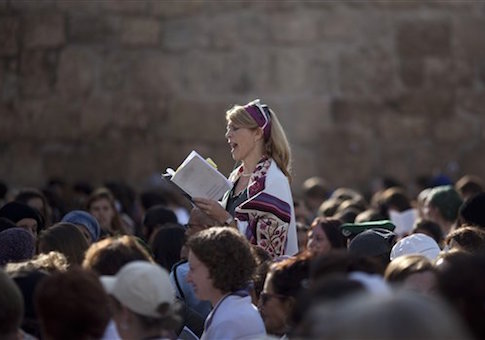JERUSALEM—In a rare instance of a Middle East dispute being resolved by compromise, the Israeli cabinet on Sunday allocated a stretch of Jerusalem’s Western Wall, hitherto reserved exclusively for Orthodox religious practices, to non-Orthodox Jewish denominations to follow their own prayer services as they wish.
The subject has been a matter of dispute for decades, with Reform and Conservative Jews demanding the right to hold prayer services at the Wall with their own liturgy and customs. The Orthodox Jewish establishment, which has controlled practices at the Wall since it came into Israeli hands in the 1967 Six Day War, insisted on reserving the prayer area for traditional Jewish practice. This has included separate prayer areas for men and women. While the Reform and Conservative denominations are the largest abroad they are a small minority in Israel and have little political clout.
The campaign for equal access to the Wall by all Jews was led in recent years by a group of Jerusalem women who called themselves Women of the Wall. They held monthly pray-ins at the Wall which frequently involved confrontation with the Wall’s Orthodox guardians. With the issue threatening to aggravate the divide between Israel and the Jewish diaspora, the government decided to find resolution.
The Western Wall is part of the exterior wall of the Jewish Temple compound built by King Herod 2,000 years ago—not part of the Temple itself, which was totally destroyed. Banished from Jerusalem by the Romans who destroyed the temple in 70 AD, Jews would in subsequent centuries come to the city to pray at a 190-foot-wide stretch of the exterior wall that had not been blocked off by buildings. After the Six Day War, the approaches to this traditional area were cleared, and a large plaza built, capable of holding as many as 100,000 people.
Under the compromise approved by the Cabinet—with the five representatives of Orthodox parties outvoted by 15 non-Orthodox ministers—the existing prayer area will remain unchanged, with separate areas for men and women. However, a stretch of the wall to its south, of still undetermined length, will become accessible to all Jewish denominations for prayer in any form they choose and with men and women together.
The area is presently an archaeological site. Excavations in the 1970s unearthed vivid reminders of the fury of the Roman conquest, remnants of columns and other architectural elements pushed over the side of the Temple compound into the valley below, the site of today’s Western Wall plaza. The new prayer area is expected to be on a platform above the archaeological remnants. The compound built for the Temple is now known as the Temple Mount, which became an Islamic holy site with the arrival of the Arabs in the 7th Century.
The Cabinet decision was hailed by the head of the Reform movement in Israel, Rabbi Gilad Kariv, who said it was the first time the government has given official recognition to non-Orthodox Jewish movements. "Once and for all, the government has put an end to the ultra-Orthodox monopoly at the Western Wall," he said.
The Orthodox custodian of the Western Wall, Rabbi Shmuel Rabinowitz, said that prayer at the existing stretch of the Wall will continue "in accordance with Jewish religious law and Jewish tradition handed down from generation to generation."
